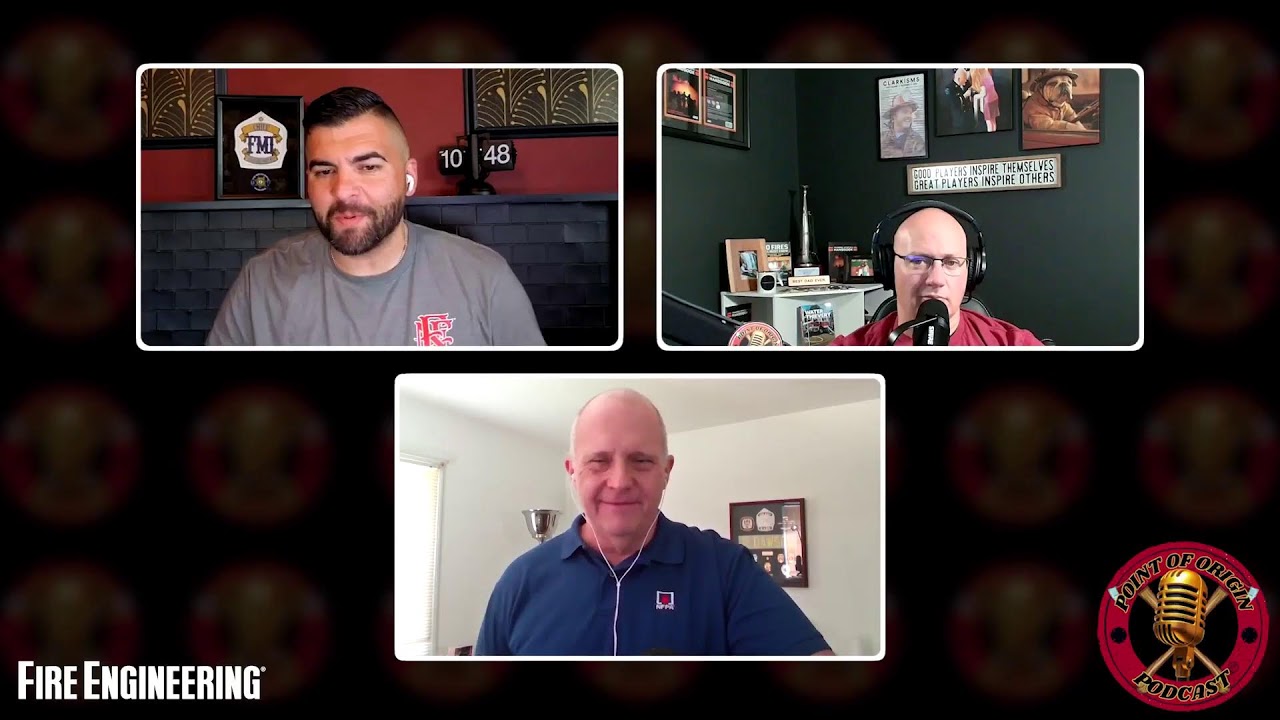In this episode of the Point of origin Podcast organizes Billy Hux and Bobby Drake with Rob Dawson, regional director of the National Fire Protection Association (NFPA) to demystify, as created, updated and consolidated. Dawson divides his journey from the volunteer firefighter to the NFPA leadership and highlights the important role that technical committees play for the balance of industrial, enforcement and end user perspectives.
Find out how you can involve yourself in the standard development process – from submitting public inputs to dealing with the committee members – and why the deliberate, multi -year update cycles from NFPA are important. The discussion also deals with general misunderstandings about the language of the appendix, code references in state fire protection codes and much more.
Brought to you by fire extinguishers.
MORE
1. The standards of NFPA are based on real input
Rob Dawson emphasizes that many perceptions about NFPA – as they are controlled exclusively by the private industry for profit – do not correspond to reality. NFPA acts as an ANSI-accredited consensus organization, in which technical committees are commissioned to represent various stakeholders, including firefighters, builders, manufacturers and rescue workers. These committees maintain a strict balance to ensure that one point of view does not overwhelm another, and they have the authority to approve, refuse or adapt proposed changes with the security of the end user as a final priority.
Commitment and education help in front of the firefighters on the front to appreciate the strict process behind codes and standards. Energy and passion often have a high committee meeting that is driven by the sincere desire to work for security, without forcing unreachable requirements, especially for voluntary departments that confront themselves with financial or labor restrictions.
2. Firefighters and stakeholders can influence the NFPA codes
A common misunderstanding is that only NFPA members or industry experts can influence the content of the standards. In truth, Dawson explains that everyone – from the Rookie Firefighter to the fire chief – can submit public entries and comments during the open cycles on the NFPA website. For example, if someone goes strongly about a technical detail in NFPA 1400 or NFPA 10 (fire extinguisher), you can suggest changes online during the public input phase. After examining the technical committee, there is another way to answer during the public comment phase, and the process finally culminates in a technical session in which applications before the NFPA membership can be made.
This approach protects against rushed, poorly informed decisions and promotes a thorough review of suggestions. It is important that Dawson emphasizes that NFPA employees themselves are prohibited from influencing the process to preserve impartiality. This openness ensures transparency in maintaining the technical rigor.
3 .. NFPA modernizes the standards to improve user -friendliness
As a result, the latest consolidation efforts are emphasized, which affect several standards, e.g. This step was driven by the practicability – and similar standards and committees brought together to reduce the layoffs and the encouragement for the members of the committee. It is even more important that consolidating problems such as contradictory definitions and inconsistent terminology have solved that are distributed via separate documents.
For example, the revised NFPA 1400 standard for fire brigade training now has uniform definitions to prevent disagreements in the statement of the courtroom or on the fire station. This harmonization helps to establish a common language that is of crucial importance for education, enforcement and everyday fire fighting.
Dawson also pointed out that the NFPA-IM review cycles seem slowly all three to five years in today's fast-moving world, but this deliberate pace is essential. It enables time for research, stakeholder input and consensus construction so that the final codes reflect the best available science and experience. This is in contrast to legislative processes, which sometimes have overturned incomplete measures with unintentional consequences.
